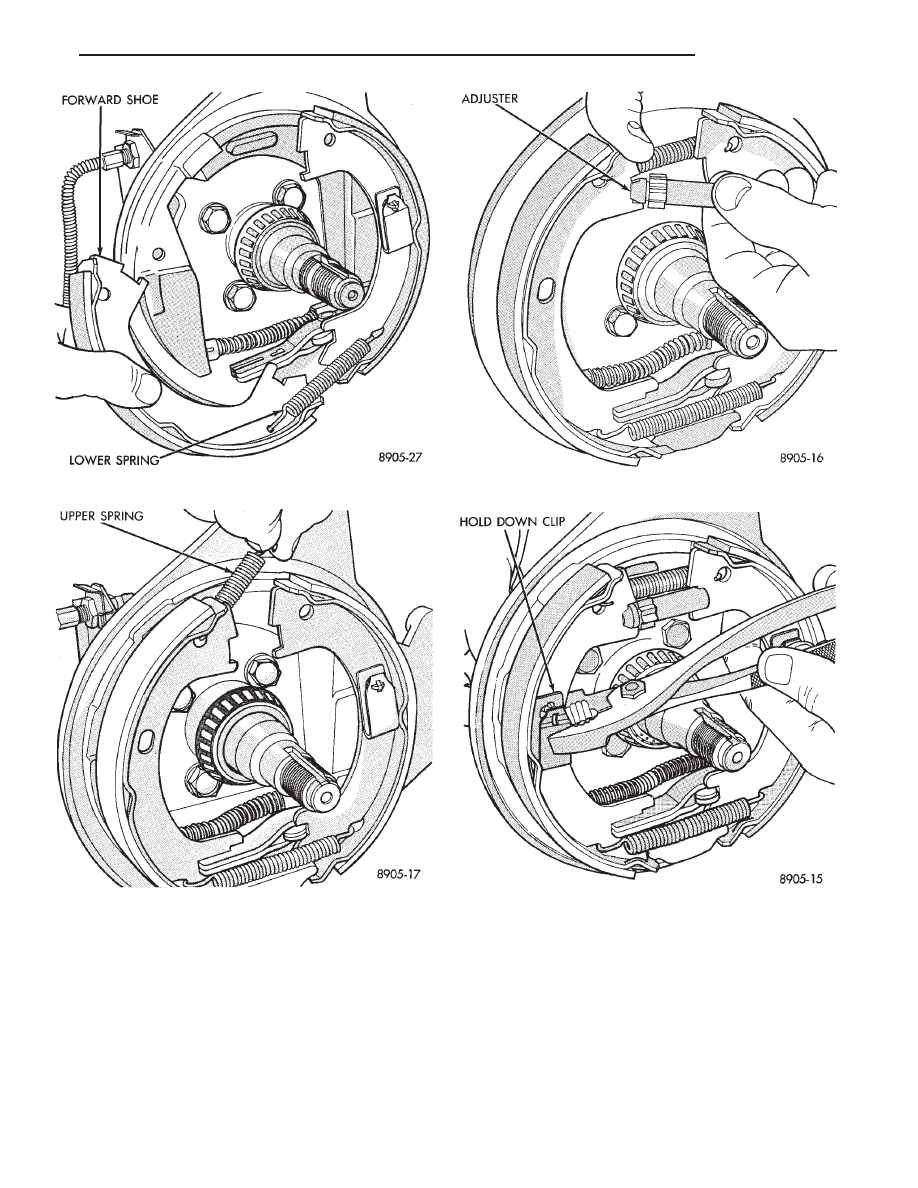Chrysler Le Baron, Dodge Dynasty, Plymouth Acclaim. Manual - part 228

(16) Install wheel and tire assemblies.
(17) Tighten wheel stud nuts to 129 N
Im (95 ft-
.lbs.).
Fig. 7 Installing Lower Spring
Fig. 8 Installing Upper Spring
Fig. 9 Installing Adjuster Assembly
Fig. 10 Installing Front Parking Brake Shoe Hold-
Down Clip
Ä
BRAKES
5 - 65